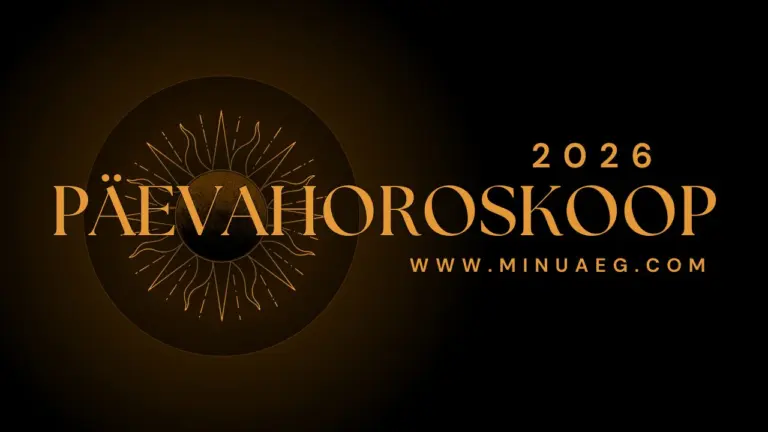
Prantsuse moelooja Pierre Cardin (02.07.1922–29.12.2020) suri teisipäeval, olles 98-aastane.
INFO: .wikipedia.org
Pierre Cardin
Jump to navigationJump to search
|
Pierre Cardin
|
|
|---|---|

Cardin in 1978
|
|
| Born |
Pietro Costante Cardin
2 July 1922 San Biagio di Callalta, Italy
|
| Died | 29 December 2020 (aged 98)
Neuilly-sur-Seine, France
|
| Nationality | Italian and French |
| Occupation | grand couturier |
| Awards | Commander of the Order of Cultural Merit (2007) |
| Signature | |
Pierre Cardin (UK: /ˈkɑːrdæ̃, –dæn/, US: /kɑːrˈdæ̃, –ˈdæn/, French: [pjɛʁ kaʁdɛ̃]; born Pietro Costante Cardin[a]; 2 July 1922 – 29 December 2020)[1] was an Italian-born naturalised-French[2][3] fashion designer. He is known for what were his avant-garde style and Space Age designs. He preferred geometric shapes and motifs, often ignoring the female form.[citation needed] He advanced into unisex fashions, sometimes experimental, and not always practical. He founded his fashion house in 1950 and introduced the “bubble dress” in 1954.
He was designated UNESCO Goodwill Ambassador in 1991[3] and FAO Goodwill Ambassador on 16 October 2009.[4]
Career
Cardin was born near Treviso. His parents were wealthy landowners, but to escape fascism they left Italy and settled in France in 1924.[5] His father, a wealthy French wine merchant,[clarification needed] wished him to study architecture, but from childhood he was interested in dressmaking.[6]

Pierre Cardin dress, heat-moulded Dynel, 1968
Cardin was educated in central France. Beginning his career early, at age 14 he worked as a clothier’s apprentice, learning the basics of fashion design and construction. In 1939, he left home to work for a tailor in Vichy, where he began making suits for women. During World War II, he worked in the Red Cross, launching humanitarian interests that continued throughout his life.[7]
Cardin moved to Paris in 1945. There, he studied architecture and worked with the fashion house of Paquin after World War II. He worked with Elsa Schiaparelli until he became head of Christian Dior‘s tailleure atelier in 1947, but was denied work at Balenciaga.[citation needed]
Cardin founded his own house in 1950. His career was launched when he designed about 30 of the costumes for “the party of the century”, a masquerade ball at Palazzo Labia in Venice on 3 September 1951, hosted by the palazzo’s owner, Carlos de Beistegui. He inaugurated his haute couture output in 1953. He was the first couturier to turn to Japan as a high fashion market when he traveled there in 1959. That same year, he was expelled from the Chambre Syndicale for launching a ready-to-wear collection for the Printemps department store as the first couturier in Paris to do as such, but was soon reinstated.[citation needed]
During the 1960s, Cardin began a practice that is now commonplace by creating the system of licenses that he was to apply to fashion. A clothing collection launched around this period surprised all by displaying the designer’s logo on the garments for the first time.[7] As haute couture began to decline, ready-to-wear (pret-a-porter) soared as well as[clarification needed] Cardin’s designs. He was the first to combine the “mini” and the “maxi” skirts of the 1970s. He introduced a new hemline that had long pom-pom panels or fringe that swayed as the body moved.[5]
Beginning in the 1970s, Cardin set another new trend: “mod chic”. This trend holds true for the form or for a combination of forms, which did not exist at the time. He was the first to combine extremely short and ankle-length pieces. He made dresses with slits and batwing sleeves with dimensions and mixed circular movement and gypsy skirts with structured tops. These creations allowed for the geometric shapes that captivated him to be contrasted, with both circular and straight lines. Cardin was an icon for starting this popular fashion movement of the early 1970s.[8]
Inspired by space travel and exploration, Cardin visited NASA (National Aeronautics and Space Administration) in 1970, where he tried on the original spacesuit worn by the first human to set foot on the moon, Neil Armstrong. Cardin loved the spacesuit so much, he created his own design for NASA in 1970.[8]

Pierre Cardin and the French composer Régis Campo, from Académie des beaux-arts, Institut de France, Paris, 2017
Cardin resigned from the Chambre Syndicale in 1966 and began showing his collections in his own venue, the “Espace Cardin” (opened 1971) in Paris, formerly the “Théâtre des Ambassadeurs”, near the Embassy of the United States. The Espace Cardin is also used to promote new artistic talents, like theater ensembles, musicians, and others.[citation needed] He also designed uniforms for Pakistan International Airlines, which were introduced from 1966 to 1971 and became an instant hit.[9]
In 1971, Cardin redesigned the Barong Tagalog, a national costume of the Philippines, by opening the front, removing the cuffs that needed cufflinks, flaring the sleeves, and minimizing the embroidery. It was also tapered to the body, in contrast with the traditional loose-fitting design and it also had a thicker collar with sharp and pointed cuffs. A straight-cut design was favored by President Ferdinand Marcos.[10]
In 1975, Cardin opened his first furniture boutique on rue du Faubourg-Saint-Honore. His furniture designs were highly inspired by his fashion designs.[5] In both 1977 and 1979, he was awarded the Cartier Golden Thimble by French haute couture for most creative collection of the season.[8] He was a member of the Chambre Syndicale de la Haute Couture et du Prêt-à-Porter from 1953 to 1993.[clarification needed]
Like many other designers today, Cardin decided in 1994 to show his collection only to a small circle of selected clients and journalists. After a break of 15 years, he showed a new collection to a group of 150 journalists at his bubble home in Cannes.
A biography called “Pierre Cardin, his fabulous destiny” was written by Sylvana Lorenz.[11]
Brand
| Product type | Fashion, perfume, jewellery, watches, pens[12] |
|---|---|
| Owner | Pierre Cardin |
| Country | France |
| Introduced | 1950 |
| Related brands | Yves Saint Laurent |
| Markets | Worldwide |
| Website | pierrecardin.com |
Pierre Cardin used his name as a brand, initially a prestigious fashion brand, then in the 1960s extended successfully into perfumes and cosmetics. From about 1988 the brand was licensed extensively, and appeared on “wildly nonadjacent products such as baseball caps and cigarettes“.
A 2005 article in the Harvard Business Review commented that the extension into perfumes and cosmetics was successful as the premium nature of the Pierre Cardin brand transferred well into these new, adjacent categories, but that the owners of the brand mistakenly attributed this to the brand’s strength rather than to its fit with the new product categories. The extensive licensing eroded the brand’s credibility, but brought in much revenue; in 1986 Women’s Wear Daily (WWD) estimated Cardin’s annual income at over US$10 million.
In 1995, quotes from WWD included “Pierre Cardin—he has sold his name for toilet paper. At what point do you lose your identity?” and “Cardin’s cachet crashed when his name appeared on everything from key chains to pencil holders”. However, the Cardin name was still very profitable, although the indiscriminate licensing approach was considered a failure.[13][14]
In 2011, Cardin tried to sell his business, valuing it at €1 billion, although the Wall Street Journal considered it to be worth about a fifth of that amount. Ultimately he did not sell the brand.[14]
Automobiles

Cardin interior in a 1972 AMC Javelin
Cardin entered industrial design by developing thirteen basic design “themes” that would be applied to various products, each consistently recognizable and carrying his name and logo. He expanded into new markets that “to most Paris fashion designers … is rank heresy.”[15]
The business initiatives included a contract with American Motors Corporation (AMC).[15] Following the success of the Aldo Gucci designed Hornet Sportabout station wagon interiors, the automaker incorporated Cardin’s theme on the AMC Javelin starting in mid-1972.[16] This was one of the first American cars to offer a special trim package created by a famous French fashion designer. It was daring and outlandish design “with some of the wildest fabrics and patterns ever seen in any American car”.[17]
The original sales estimate by AMC was for 2,500 haute couture “pony” and muscle cars.[18] The special interior option was continued on the 1973 model year Javelins.[19] During the two model years, a total of 4,152 AMC Javelins received this bold mirrored, multi-colored pleated stripe pattern in tones of Chinese red, plum, white, and silver that were set against a black background.[20] The Cardin Javelins also came with the designer’s emblems on the front fenders and had a limited selection of exterior colors (Trans Am Red, Snow White, Stardust Silver, Diamond Blue, and Wild Plum) to coordinate with the special interiors.[21] However, 12 Cardin optioned cars were special ordered in Midnight Black paint.[20]
Other interests
Continuously fascinated by geometric shapes, Cardin purchased the Palais Bulles (the Bubble House) in 1991. The house was designed by the architect Antti Lovag, and Cardin furnished the Bubble House with his original creations. The curves of the Bubble House extend over 1,200 square metres and contain ten bedrooms decorated by contemporary artists, as well as a panoramic living room.[7]
Cardin bought Maxim’s restaurants in 1981 and soon opened branches in New York, London, and Beijing (1983). A chain of Maxim’s Hotels (Palm Springs, California, 1986) were included in the assets. He also licensed a wide range of food products under that name.
During the 1980s and until the mid-1990s, he supported a French Press organization for Music-hall, Circus, Dance and Arts presided by a well-known journalist in France, Jacqueline Cartier, with authors or notable personalities as Guy des Cars, Francis Fehr, Yves Mourousi and Jean-Pierre Thiollet.
In 2001, Cardin purchased the ruins of the castle in Lacoste, Vaucluse that was once inhabited by the Marquis de Sade; he partially renovated the site and held music or dance festivals (particularly with Marie-Claude Pietragalla) there.[22]
Cardin also owned a palazzo in Venice named Ca’ Bragadin. Although he claimed in several interviews that this house was once owned by Giacomo Casanova, in reality, it was the home of Giovanni Bragadin di San Cassian (1733–1758), Bishop of Verona and Patriarch of Venice.
Death
Cardin died on 29 December 2020, at the American Hospital of Paris, in Neuilly-sur-Seine, at the age of 98.[23]
Distinctions
Monaco: Commander of the Order of Cultural Merit (2007)[24]
Notes
- ^ Italian pronunciation: [ˈpjɛːtro karˈdin], Venetian: [kaɾˈdiŋ].
References
- ^ “Biography” (PDF). pierrecardin.com. Retrieved 1 August2017.
- ^ “Biography”. pierrecardin.com.
- ^ Jump up to:a b “UNESCO Celebrity Advocates: Pierre Cardin”. United Nations Educational, Scientific and Cultural Organization. Archived from the original on 11 November 2009. Retrieved 2 July 2010.
- ^ “Meet the Goodwill Ambassadors: Pierre Cardin”. The Food and Agriculture Organization of the United Nations. Retrieved 2 July 2010.
- ^ Jump up to:a b c Hesse, Jean-Pascal (2010). Pierre Cardin: 60 Years of Innovation. Assouline. ISBN 978-2-7594-0424-7.
- ^ “Savannah College of Art and Design”. library.scad.edu.
- ^ Jump up to:a b c “Mid-Century Online Magazine, Pierre Cardin, 6 July 2012″.
- ^ Jump up to:a b c Längle, Elisabeth (2005). Pierre Cardin: fifty years of fashion and design. London: Thames & Hudson. ISBN 9780500512708.
- ^ Kureishi, Omar (4 May 2003). “Pierre Cardin comes to PIA”. Dawn Magazine. Retrieved 26 March 2012.
- ^ Edwards, Louise; Roces, Mina, eds. (2010). The Politics of Dress in Asia and the Americas. Sussex Academic Press. p. 31. ISBN 978-1-84519-399-7.
- ^ Lorenz, Sylvana (2006). Pierre Cardin: son fabuleux destin (in French). Paris: Editions No 1. ISBN 9782846121910.
- ^ “World”. pierrecardin.com. Retrieved 25 September 2020.
- ^ Reddy, Mergen; Terblanche, Nic (December 2005). “How Not to Extend Your Luxury Brand”. Harvard Business Review. Retrieved 6 May 2017.
- ^ Jump up to:a b Dike, Jason (23 November 2015). “Digging Deeper – Pierre Cardin’s Demise to “Licensing King““. Highsnobiety.com. Retrieved 6 May 2017.
- ^ Jump up to:a b “Pierre Cardin Goes Industrial”. Business Week: 44. 1972. Retrieved 7 August 2012.
- ^ “Introducing the Cardin Javelin”. New York Magazine. New York Media: 45. 20 March 1972. Retrieved 7 August 2012.
- ^ Mitchell, Larry G. (2000). AMC Muscle Cars. MotorBooks/MBI Publishing. pp. 55–56. ISBN 978-0-7603-0761-8.
- ^ Mays, James C. (2006). The Savvy Guide to Buying Collector Cars at Auction. Indy-Tech Publishing. p. 28. ISBN 978-0-7906-1322-2.
- ^ Lamm, Michael (October 1972). “AMC: Hornet hatchback leads the lineup”. Popular Mechanics. 138 (4): 119. Retrieved 7 August 2012.
- ^ Jump up to:a b Cranswick, Marc (2012). The Cars of American Motors: An Illustrated History. McFarland. p. 112; 125; 247. ISBN 978-0-7864-4672-8.
- ^ Foster, Patrick (April 2007). “Pierre Cardin Meets the Javelin”. Hemmings Classic Car (31).
- ^ Lichfield, John (19 August 2009). “Does Lacoste want the grand designs of Pierre Cardin? Non merci”. The Independent. Retrieved 19 January 2010.
- ^ Le couturier français Pierre Cardin est mort (in French)
- ^ Gouvernement de Monaco (18 November 2007). “Ordonnances Souveraines (Décorations) N° 7835” (PDF). www.legimonaco.mc (in French). Retrieved 4 July 2019.
Further reading
- Lorenz, Sylvana (2006). Biographie de Pierre Cardin (in French). Paris: éditions Calmann-Lévy.
External links
| Wikimedia Commons has media related to Pierre Cardin. |




















